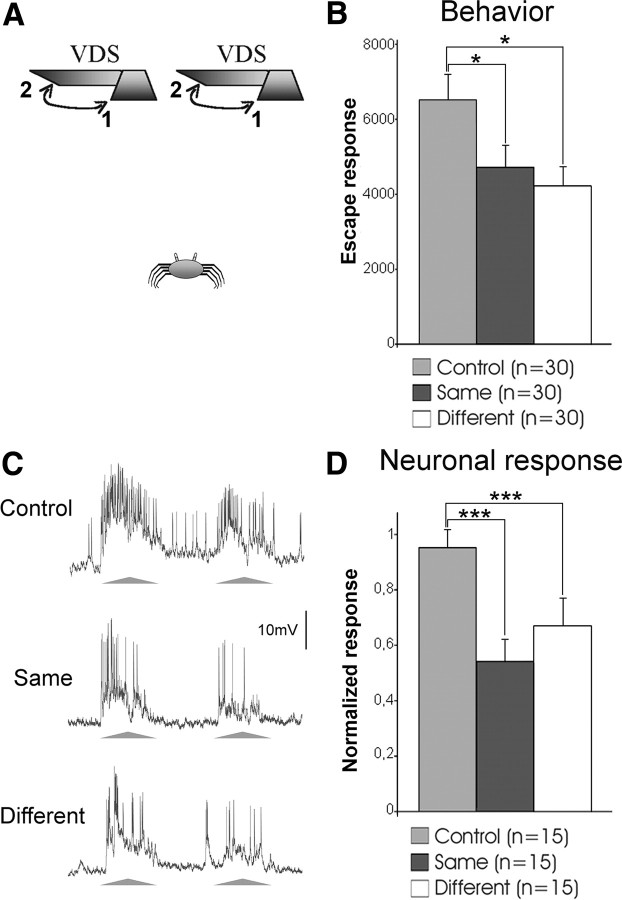Figure 1.
The crab's ability for generalization of stimulus position is supported by the LGs. A, Two VDSs located 25 cm above the crab were used independently to stimulate animals. The two VDSs were separated by 37 cm, which represents an angular separation of 73° for the crab. The VDS moved from 1 to 2 and back. Training consisted of 15 trials with fixed intertrial intervals of 3 min. Behavioral experiments included a control and two trained groups, one tested with the same VDS as in the training and the other with a different one. B, Mean escape responses of the three groups at a testing session 24 h after training. C, Representative example of the responses of one LG to the VDS at the control trial (first training trial) and at test trials performed at the end of training with the same or the different VDS. The triangles below the traces represent the two cycles of stimulus movement comprising a trial (triangle base: 2.2 s). D, Mean neuronal responses of experiments as exemplified in C. Bars show mean ± SE. *p < 0.05; ***p < 0.005. In B, n represents the number of crabs in each group. In D, n represents the number of neurons (one per animal) evaluated before training (control) and at the two test trials. See Materials and Methods for further details.

